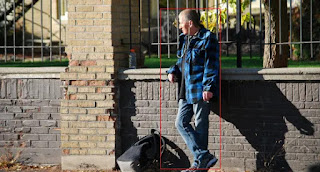How AI Video Analytics Can Improve School Security
In recent years, concerns about school safety have grown significantly, prompting educational institutions to seek innovative solutions to protect students, staff, and faculty. With the rapid advancement of technology, artificial intelligence (AI) has emerged as a promising tool for enhancing security measures in schools. One such application is AI video analytics, which offers a range of capabilities to improve school security. This article explores how AI video analytics can be leveraged to bolster safety in educational environments.
AI video analytics involves the use of advanced algorithms to analyze video footage in real-time, enabling automatic detection, recognition, and response to various events and anomalies. In the context of school security, this technology can be employed in several ways:
Intrusion Detection:
AI-powered cameras can detect unauthorized individuals entering restricted areas such as classrooms, hallways, or administrative offices. By analyzing patterns of movement, these systems can differentiate between normal activities and suspicious behavior, triggering immediate alerts to security personnel.
Facial Recognition:
Facial recognition technology integrated with AI video analytics can identify individuals on school premises, including students, staff, and visitors. Authorized personnel can be granted access while unauthorized individuals can be flagged for further investigation, enhancing overall security protocols.
Behavioral Analysis:
AI algorithms can analyze behavioral patterns captured in video footage to identify potentially threatening behaviors or situations. For example, sudden movements, aggressive gestures, or suspicious loitering can be flagged as potential security risks, allowing for timely intervention by security personnel.
Vehicle Recognition:
By integrating with existing surveillance systems, AI video analytics can identify vehicles entering or parking on school premises. This includes recognizing registered vehicles associated with students, staff, or authorized visitors, as well as detecting suspicious vehicles or license plates linked to security concerns.
Emergency Response Optimization:
In the event of an emergency such as a fire, intrusion, or active shooter situation, AI video analytics can play a crucial role in streamlining response efforts. By providing real-time situational awareness to emergency responders, including the location and nature of the threat, precious time can be saved in executing effective evacuation or lockdown procedures.
Crowd Monitoring:
Large gatherings such as assemblies, sporting events, or parent-teacher meetings can pose security challenges. AI video analytics can monitor crowds in real-time, detecting overcrowding, disturbances, or signs of panic. This enables proactive measures to maintain order and ensure the safety of all attendees.
Preventive Maintenance:
Beyond security threats, AI video analytics can also contribute to the maintenance of school infrastructure. By monitoring facilities for signs of wear and tear, damage, or malfunctions, maintenance issues can be identified early, reducing the risk of accidents or disruptions to daily operations.
While AI video analytics holds immense potential for improving school security, its implementation raises important considerations:
Privacy Concerns:
The deployment of surveillance technologies in educational settings must be balanced with respect for individual privacy rights. Transparent policies and procedures regarding data collection, storage, and usage are essential to address privacy concerns and foster trust within the school community.
Ethical Considerations:
The use of AI algorithms for behavior analysis and facial recognition raises ethical questions regarding bias, accuracy, and potential misuse. Safeguards such as algorithmic transparency, bias mitigation strategies, and regular audits are necessary to ensure fair and accountable use of these technologies.
Integration with Existing Systems:
Effective implementation of AI video analytics requires seamless integration with existing security infrastructure, including cameras, access control systems, and emergency response protocols. Compatibility issues and technical challenges may arise, necessitating careful planning and coordination.
Training and Awareness:
Proper training and awareness programs are essential to empower school administrators, security personnel, and staff in utilizing AI video analytics effectively. Education on system capabilities, best practices, and emergency procedures can enhance preparedness and response capabilities.
Conclusion:
AI video analytics software offers a powerful means of enhancing school security by enabling proactive threat detection, rapid response, and situational awareness. By leveraging advanced algorithms to analyze video footage in real-time, educational institutions can mitigate security risks, protect lives, and create safer learning environments for students, staff, and faculty. However, successful implementation requires careful consideration of privacy, ethics, integration, and training to maximize the benefits of this transformative technology in safeguarding our schools.

.jpg)
.jpg)

%20(1).jpg)


Comments
Post a Comment